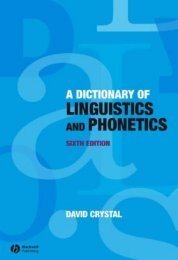url?sa=t&source=web&cd=3&ved=0CC0QFjAC&url=http://www.teachingenglish.org.uk/sites/teacheng/files/B369-Young-Learners-Activity-Book_v10
url?sa=t&source=web&cd=3&ved=0CC0QFjAC&url=http://www.teachingenglish.org.uk/sites/teacheng/files/B369-Young-Learners-Activity-Book_v10
url?sa=t&source=web&cd=3&ved=0CC0QFjAC&url=http://www.teachingenglish.org.uk/sites/teacheng/files/B369-Young-Learners-Activity-Book_v10
You also want an ePaper? Increase the reach of your titles
YUMPU automatically turns print PDFs into web optimized ePapers that Google loves.
TeachingEnglish <strong>Young</strong> <strong>Learners</strong> <strong>Activity</strong> <strong>Book</strong><br />
Activities<br />
<strong>Activity</strong> 11: Plants and seeds<br />
Erica Cimarosti – Italy<br />
Age: 9+<br />
2 lessons Large classes? Yes Mixed level? Yes<br />
Materials: Coloured paper (A4).<br />
Organisation: Individual, whole class.<br />
Aim: To learn science through English, to practise listening,<br />
speaking and writing.<br />
Description: The children choose a seed and/or plant to describe<br />
and write notes and information about it in a leaflet.<br />
Preparation: The teacher does not need to prepare anything for<br />
this activity as the children bring things from home. However, you<br />
might prefer to prepare an example of a leaflet to show the children.<br />
Procedure<br />
1. In the first lesson, ask the children what they have learnt about seeds and plants in science.<br />
Allow them to use the L1 if necessary, repeating what they say in English. Ask them to<br />
choose a plant they have studied in their science lessons for their English project.<br />
2. For homework, ask the children to find out as much information as they can about their plant<br />
and to cut out pictures of it, or bring in sample of seeds and plants. Make sure none of the<br />
plants is toxic!<br />
3. In the second lesson, give each child a sheet of coloured paper and ask them to fold it<br />
in half, top to bottom. Make sure the children then turn the paper so that it opens like a<br />
book with 4 pages.<br />
4. Make sure the children leave the first page blank. On the second page, tell them to write<br />
the name of the plant at the top and stick a picture of the plant or seed (or their sample).<br />
They should then write the main information about the plant: popular name, scientific name,<br />
colour, size, preferred soil, propagation.<br />
5. On the third page, tell them to write a description of the plant by answering the following<br />
questions: Where does it come from? Where does it grow? What is it useful for? What other<br />
interesting things do you know about this plant?<br />
6. Encourage the children to decorate their leaflet, but make sure the first and last pages<br />
are left blank.<br />
7. Join all the leaflets together by gluing the back page of one leaflet to the front page<br />
of the next leaflet to make a class accordion book.<br />
Notes<br />
This activity works particularly well if you can decide the topic with the subject teacher.<br />
Erica agreed this with her learners’ science teacher as the children had studied seeds and<br />
plants in science and also worked in the school garden.<br />
28<br />
© British Council 2012





